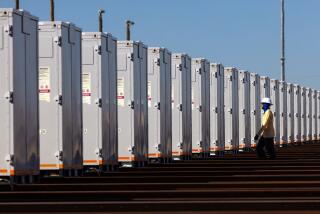Climate change report: Weather, rising seas imperil power plants
WASHINGTON – Power plants across the country are at increased risk of temporary shutdown and reduced power generation as temperatures and sea levels continue to rise and water becomes less available, the Energy Department said Thursday.
By 2030, there will be nearly $1 trillion in energy assets in the Gulf Coast region alone at risk from increasingly costly extreme hurricanes and sea level rises, according to an Energy Department report on the effects of climate change on energy infrastructure.
“As President Obama said in his speech last month, climate change is happening,” spokeswoman April Saylor said in a statement. “As climate change makes the weather more extreme, we have a moral obligation to prepare the country for its effects.”
The report calls on federal, state and local governments to more urgently prepare crucial infrastructure - particularly coal, natural gas and nuclear plants - for the compounded risks posed by floods, storms, wildfires and droughts.
“All of our science goes in one direction: The damages are going to get worse,” Assistant Energy Secretary Jonathan Pershing said. “It will take dozens of actors from government and private sectors planning what to do and how to make it cost-effective.”
The report notes that annual temperatures have increased about 1.5 degrees over the last century. More than 130 extreme weather events costing $1 billion or more in damages have occurred since 1980.
It says that 2012 was the second most expensive year for weather and climate disasters, with $115 billion in damages from Superstorm Sandy and the extended drought. Only 2005’s Hurricane Katrina was more costly.
Higher peak electricity, costing consumers $45 billion, will require an additional 34 gigawatts of new power generation capacity in the western United States by 2050. And as infrastructure ages, storm-related power outages are likely to become increasingly frequent, at an annual cost of $20 billion to $50 billion, the report said.
“More and more communities are analyzing vulnerabilities and their risks, and developing plans in response to those risks,” said Brian Holland of the International Council for Local Environmental Initiatives. He said more state and federal support was needed for communities, who also pursue private funding.
Greenpeace USA spokesman Robert Gardner said the administration’s primary focus should be transitioning to wind and solar technology, not relying on fossil fuels and nuclear energy.
“The question is why the Department of Energy is really focusing on continuing the problem which has caused this tidal wave of global warming,” Gardner said.
Benjamin Cole of the American Energy Alliance, which lobbies for oil and natural gas, said climate predictions should not be used to justify the “sweeping changes” of Obama’s energy proposals. Alternative energy has yet to live up to its promise, he said.
“We can’t continue to dole out money we don’t have” for alternative energy, Cole said.
nation@latimes.com
[For the record, 8:57 p.m. July 11: An earlier version of this post said temperatures had increased at an annual average of 1.5 degrees since 1900. Actually, the report says annual temperatures have increased about 1.5 degrees over the last century.]
ALSO:
Reid sets stage for filibuster showdown
California’s egg law threatened by House bill
House narrowly passes farm bill, leaves out food stamps
More to Read
Get the L.A. Times Politics newsletter
Deeply reported insights into legislation, politics and policy from Sacramento, Washington and beyond. In your inbox three times per week.
You may occasionally receive promotional content from the Los Angeles Times.










